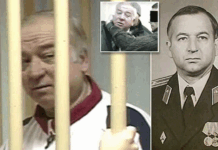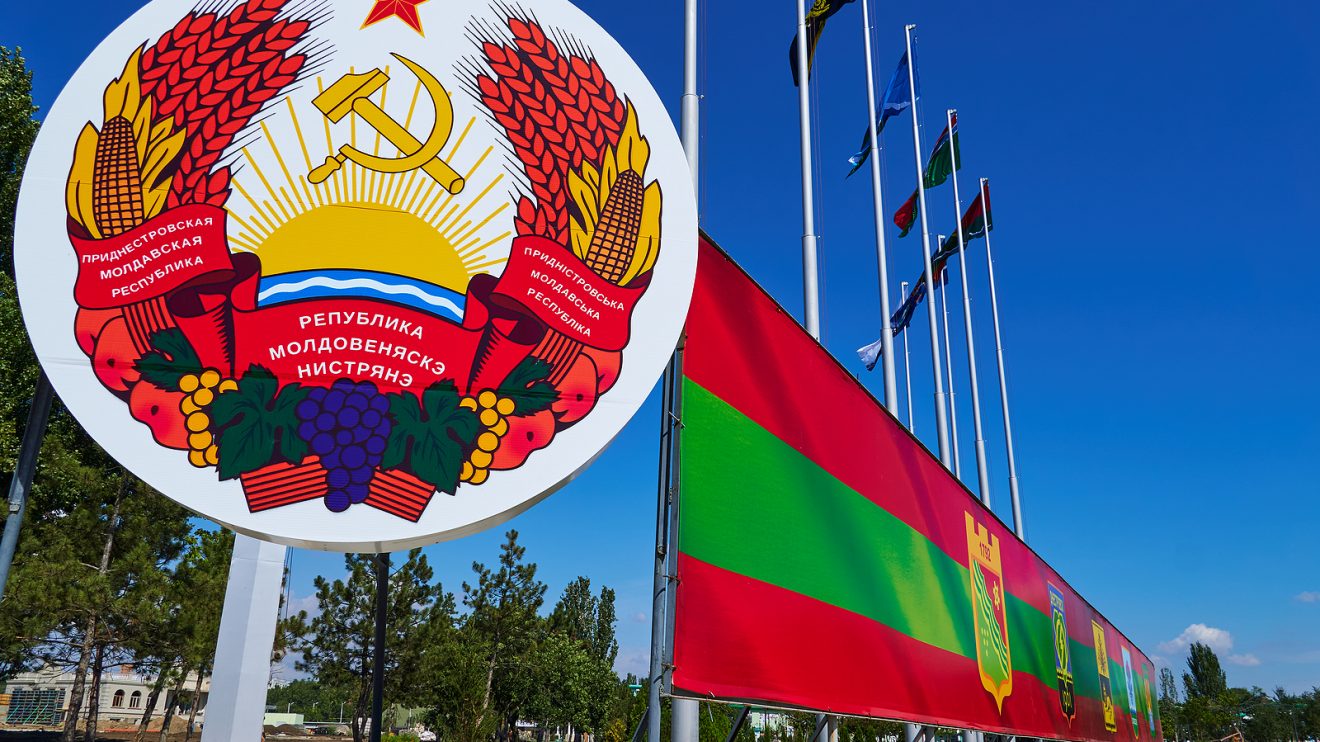
The New Year’s Day decision by Ukraine to suspend a five-year gas transit agreement with Moscow has triggered an energy crisis in Europe and threatened to spill its ongoing conflict with Russia over into neighboring countries.
The termination of Russian gas exports to the continent via Ukrainian pipelines has already impacted several European nations reliant upon fuel from Gazprom, Russia’s state-owned energy giant, including Slovakia and Moldova.
Slovakian Prime Minister Robert Fico, who survived an assassination attempt last year over his opposition to the Ukraine proxy war, has threatened to cut off electricity supplies to Kyiv in retaliation. Meanwhile, Moldova has declared a national state of emergency after the gas stoppage plunged the little-known breakaway region of Transnistria, a tiny separatist enclave landlocked along the Moldovan border with Ukraine, into a humanitarian catastrophe.
Officially known as the Pridnestrovian Moldavian Republic (PMR), the breakaway state is internationally unrecognized and has been deadlocked in a “frozen conflict” with Moldova since the signing of an armistice in 1992 following an armed rebellion.
One of several disputed post-Soviet territories in a never-ending stalemate since the dissolution of the USSR, Transnistria faces imminent collapse as its fuel provisions continue to run out amidst freezing winter temperatures and rolling blackouts. At the same time, Moldova will no longer receive Russian gas-fired electricity from the country’s largest power plant located in the PMR.
While Chișinău, the capital and largest city of Moldova, and the rest of the country are able to obtain utilities from the European Union in the meantime, the secessionist region has been entirely dependent upon free gas shipments from Russia for decades. Tiraspol [Transnistria’s de facto capital] has since turned down a coercive EU aid offer but accepted temporary loan funds from Moscow to purchase gas from a Hungarian firm, while many Transnistrians have died from fires and carbon monoxide poisoning. Even though Transnistria is dominated by Russian speakers and it was Kyiv which let the contract expire, the Kremlin has been blamed for the crisis.
Energy competition has been a driving factor in the geo-political tensions between the U.S. and Russia, with Washington resorting to outright terrorism in the bombing of the Nord Stream 2 pipeline in the Baltic Sea to undermine Moscow’s foothold in the European energy market. Ukraine’s recent attacks on Russia’s TurkStream infrastructure is just the latest example.
In halting the flow of natural gas from Russia to EU customers, Kyiv hopes to drag other players into the quagmire and undermine future peace negotiations amid Donald Trump’s return to the White House. It also risks reigniting a deadly conflict in eastern Moldova that has been at a standstill for more than three decades, one that most Americans have likely never even heard of.
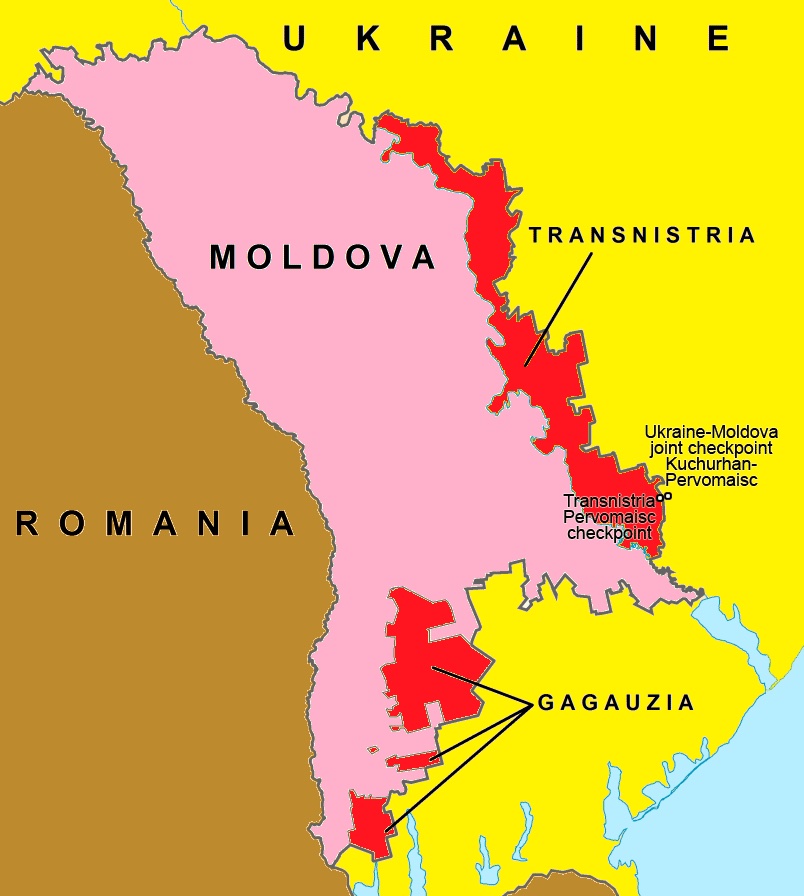
Referred to locally as Pridnestrovie, Transnistria sought to secede from Moldova even before the end of the Soviet Union in response to a rise of nationalism and Chișinău’s threats to unify with Romania. Under Soviet Moldova, Romanian irredentism had been largely suppressed before Mikhail Gorbachev’s reform policies of glasnost (“openness”) and perestroika (“restructuring”) in the 1980s opened the door for a revival of ethno-nationalism as the USSR disintegrated.
Romanian nationalists believe Moldovan identity is an artificial nationality created by the Bolsheviks, and that Romanians and Moldovans comprise a single ethnic group, an ethnolinguistic controversy still in dispute.
On top of that, the break-up of the Soviet Union left millions within the Russian diaspora trapped inside the borders of newly sovereign states, including Moldova. After an unsuccessful attempt by Chișinău to impose a resolution on the PMR with military force, the self-declared mini-state came under the protection of Russian peacekeeping forces where it remains to this day. An industrial hub, Transnistria is also home to the biggest ammunition depot in Europe, one of many reasons for its geo-strategic importance.
In order to fully understand such a conundrum, it is necessary to revisit some of Moldova’s history. In the early 19th century, Imperial Russia fought one of several wars with the Ottoman Empire and Alexander I seized the principality of Moldavia from the Turks, renaming the region Bessarabia. A century later, the Russian Revolution and ensuing Civil War resulted in the loss of many one-time Tsarist border regions, including the mostly Romanian-speaking Bessarabia, which was annexed by the Kingdom of Romania.
Meanwhile, the contiguous sliver of land following the Dniester River called Transnistria (“beyond the Dniester“) fell under the control of the Soviet Union which was established from the ruins of Tsardom. Vladimir Lenin referred to the Russian Empire as the “prison house of nations” with regard to its heterogenous demography and formulated a state-sponsored nationalities program that would grant “autonomisation” to regions with mixed populations.
During the inter-war period, the Bolsheviks redrew an autonomous Moldavian republic within Soviet Ukraine in the hope that statehood would make Moldova, then mostly ethnically Ukrainian, more sympathetic to communism as part of the nationalities policy. The USSR later regained Bessarabia from the Romanian monarchy through the signing of the Molotov-Ribbentrop pact with Nazi Germany in 1939, the controversial territorial divisions of which laid the foundations for the current strife.
While some areas of Bessarabia were incorporated into Soviet Ukraine, the Transnistria strip and remainder of the historical region merged to form the Moldavian Soviet Republic. This was interrupted by World War II when the Kingdom of Romania under dictator Ion Antonescu became a fascist puppet state and invaded the USSR with the Germans in 1941, occupying Moldova and carrying out genocide against Jews, Roma and other minorities until its liberation by the Red Army.
During the Axis occupation, Transnistria was used as a site for mass killings and deportations which greatly altered its demographic make-up into a diverse precinct. In the post-war years, Romanian speakers were encouraged by the Soviets to write in Cyrillic script (which already had been used pre-revolution) and Russian became a second official language. For decades, Soviet Moldova and its intermingled communities cohabitated peacefully until Gorbachev’s counter-revolutionary policies in the 1980s reignited nationalist fervor and ultimately led to the breakdown of the USSR.
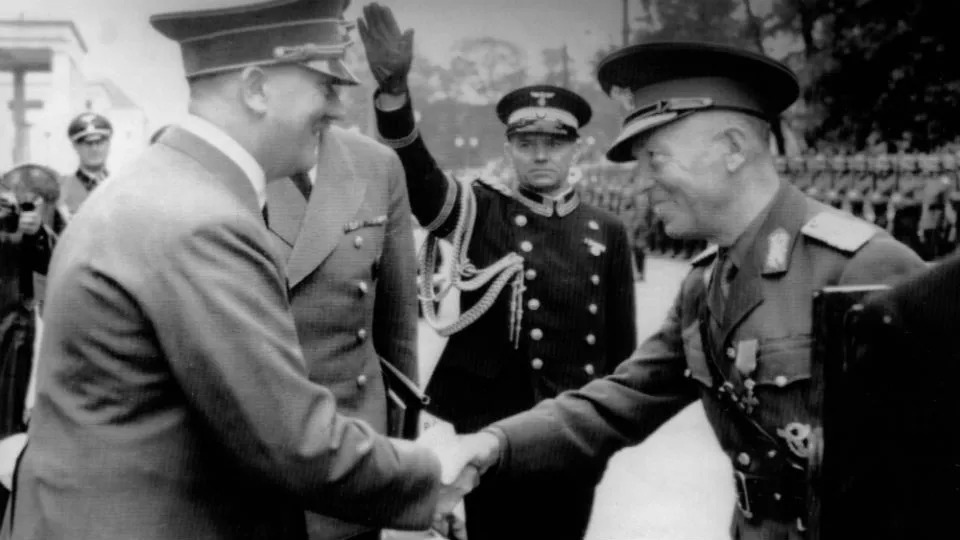
Upon Moldova’s independence in 1991, Chișinău removed Russian as a co-official language and reinstated the Latin alphabet, infuriating Russophone minorities, especially in Transnistria and the Turkic-Christian province of Gagauzia. Strained relations with Tiraspol only worsened with the nationalist calls for reunification between Romania and Moldova.
Without recognizing the cessation of the USSR, Transnistria then declared its own independence (the PMR technically considers itself a Soviet republic and is the only remaining state to fly the hammer and sickle). After several months of fighting between the separatists and pro-Moldovan forces, the Russian army came to Tiraspol’s aide and a truce was brokered.
For more than 30 years, the ethno-territorial conflict has been at an impasse, but Ukraine’s move to halt the flow of fossil fuels from Russia to Europe could revive the bloodshed that transpired in the early 1990s if Transnistria is left freezing in the dark.
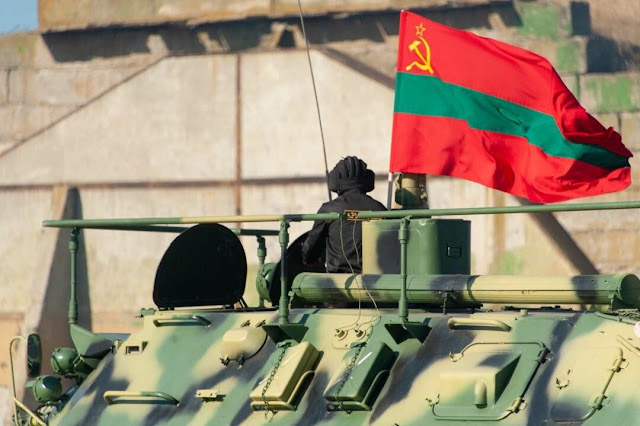
In the early 2000s, a political solution was nearly reached in Tiraspol when a Russophilic Communist Party came to power in Moldova, the first nominally Marxist-Leninist government to be elected in a post-Soviet state (which nearly happened in Russia in 1996 before the West intervened). Unfortunately, President Vladimir Voronin tried to play both sides over the Transnistria question and Washington scuttled a proposed settlement that would have led to the withdrawal of Russian peacekeepers.
In the end, Chișinău’s cultivation of closer ties with the West backfired in Voronin’s ouster during 2009’s so-called Grape Revolution, a U.S.-orchestrated color revolution nicknamed in reference to the country’s large wine industry. Also known as the Twitter Revolution, the then-nascent social network was already being used by CIA cutouts and soft power NGOs to engineer regime change.
Portrayed externally as a pro-democracy protest movement, Romanian nationalists also played a key role in the demonstrations. Rallying behind slogans like “Moldova is the cradle of Romanian civilization,” nationalists turned out in droves to riot against communist revisions to history books taught in Moldovan schools acknowledging Romanian-Nazi collaboration.
Voronin’s anti-communist challenger and de facto opposition leader, Mihai Gimpu, was an admirer of Ion Antonescu and notably referred to the country’s Turkic-Orthodox Gagauzian community (who also have sought independence) as an “ulcer on the body of the Moldovan people.” Since the overthrow of the Communist Party, Moldova has since been pulled closer into the Western sphere of influence while the Transnistria question endures.
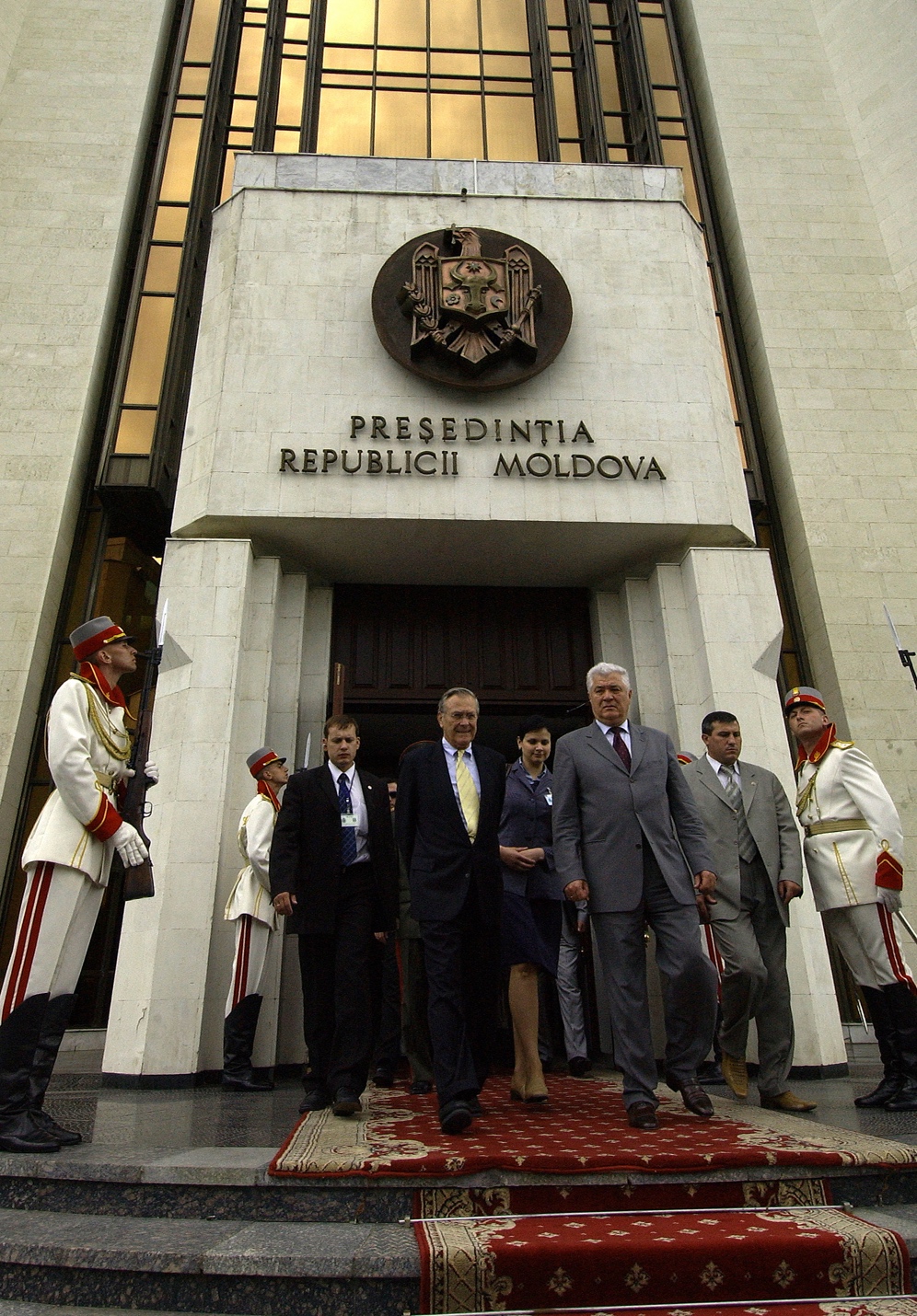
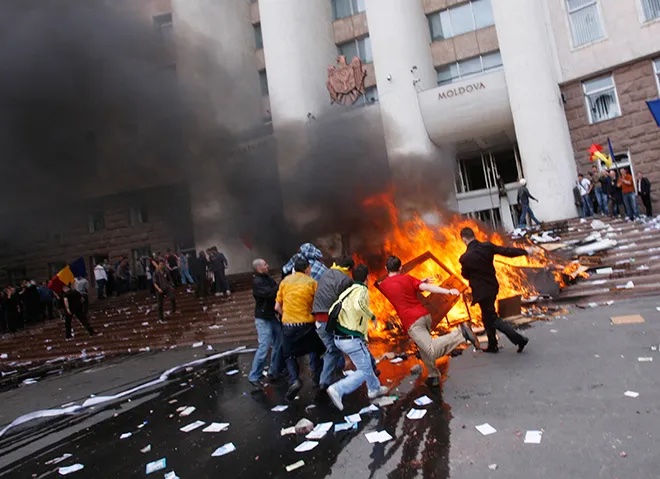
Far from an anomaly, the West’s encouragement of ethno-nationalism behind the Iron Curtain led to similar wars of secession throughout the USSR as it dissolved. (Even in a country that was non-aligned throughout the Cold War like the former Yugoslavia, the strategy was also implemented.) In the North Caucasus, a violent jihadist uprising was waged by Islamist Chechen separatists against Russia, resulting in two bloody campaigns until a compromise was finally reached under Vladimir Putin (in hindsight, it has become apparent the CIA covertly supported the terrorist insurgency in southern Russia).
In the South Caucasus, internecine warfare broke out in Artsakh over the predominantly Armenian-populated highlands of Nagorno-Karabakh between Armenia and Azerbaijan, an unending inter-ethnic conflict that flared up as recently as 2020. Meanwhile in Georgia, Moscow drew Western condemnation when it intervened to defend the self-governing republics of Abkhazia and South Ossetia from an assault by Tbilisi on the contested border provinces safeguarded by Russian peacekeepers. Even though an EU inquiry found that the 2008 Russo-Georgian war was started by Tbilisi’s artillery shelling of Ossetian civilians, the Kremlin was still scapegoated for the five-day battle.
Subsequently voted out of office and facing numerous charges at home, Georgia’s Columbia University-educated ex-President, Mikheil Saakashvili, spent time living abroad as a Brooklyn hipster before resurfacing in Ukraine when President Petro Poroshenko appointed him governor of Odesa Oblast.
A confectionary tycoon known as the “Chocolate King” and one of Ukraine’s wealthiest men, Poroshenko took power not long after the Western-backed Maidan coup in 2014. The Banderite junta in Kyiv provoked unrest in the Russian-speaking portions of the country, including Crimea in the south and the eastern Donbas region. While the former was able to successfully reintegrate with the Motherland in a referendum, the Novorussian republics of Donetsk and Lugansk were forced to take up arms in pursuit of their right to self-determination. After eight long years of bombing by the Ukrainian army, Moscow finally stepped in to help the confederation when it launched its special military operation (SMO) in 2022. The same critical juncture could soon be reached in Transnistria if the looming humanitarian crisis worsens.
In the lead-up to the gas discontinuation, there has been shameless Western meddling in recent elections held in both Romania and Moldova to preserve the anti-Russian bloc in Europe, already showing cracks with Slovakia and Hungary. Although public support for unification with Romania has diminished, the possibility of EU integration remains on the table for Moldova and would set the course for Romanianization.
This past November, Chișinău held a presidential election and constitutional referendum on EU accession in which hundreds of polling stations were opened across Western Europe for Moldovan citizens living abroad, while only two polling locations were permitted in Russia (which is home to a Moldovan diaspora of nearly half a million people). Unsurprisingly, the results of the rigged contest backed EU membership, while the pro-Western incumbent, President Maia Sandu, was victorious over her Euroskeptic opponent, Alexandr Stoianoglo. During the Ukraine war, Sandu’s regime has enacted a series of anti-Russian policies, including the banning of the public display of the Ribbon of St. George and other Soviet-era symbols representing the Great Patriotic War.
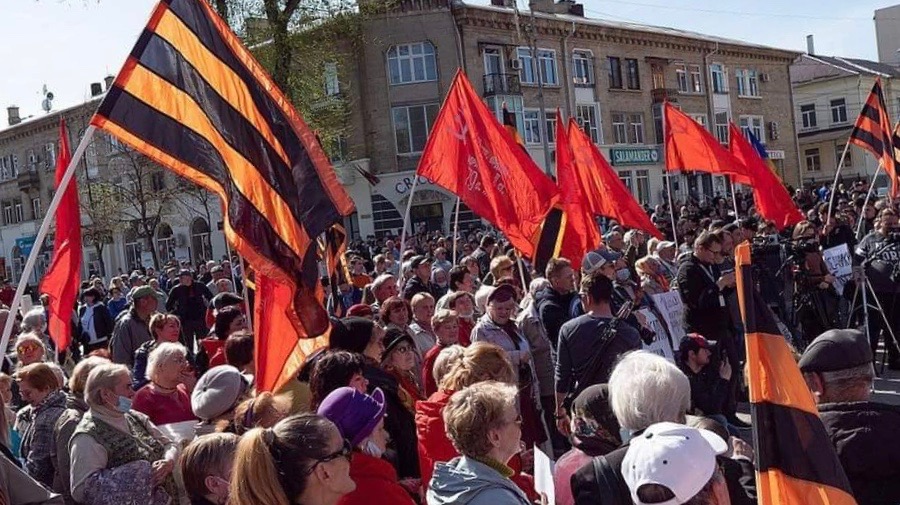
In Romania, the Western interference was even more brazen. After conservative populist Călin Georgescu won the first round of the country’s presidential election in November, Romania’s high court illegally vacated the results and canceled the second-round runoff to prevent the anti-EU frontrunner from achieving victory.
A vocal critic of U.S. military presence in Romania which is a launching pad for NATO aggression toward Russia, Georgescu’s surprise win was annulled in a constitutional coup. In fact, no voter fraud is even alleged to have occurred, as the stated reason for the top court’s ruling was that the democratic process was impacted by an unproven Russian influence operation.
In other words, the electorate did not cast their votes the way they were supposed to. The outsider Georgescu finished three percentage points ahead of his pro-EU rivals, the Brussels-favored candidate, Elena Lasconi, of the Save Romania Union, and the current Prime Minister, Marcel Ciolacu of the Social Democratic Party, a ruling faction synonymous with graft.
The 2019 Oscar-nominated documentary Collective, in which a team of journalists investigating a deadly nightclub fire discover massive health care fraud leading to the resignation of former Prime Minister Victor Ponta, is a shocking exposé of Romania’s rank corruption. Outgoing U.S. President Joe Biden’s son, Hunter, is even reported to have accepted bribes from a Romanian oligarch in an influence-peddling scheme. Since the fall of Nicolae Ceaușescu, Romania has been economically and politically circling the drain, as have most of the erstwhile socialist countries of Eastern Europe.
Unchecked malfeasance in Moldova is nearly as widespread. With Brussels and Washington’s leadership preferences imposed on Chișinău, the Moldovan economy is lining the pockets of foreign investors as the country is turned into an imperialist proxy. A 2019 report entitled “Overextending and Unbalancing Russia” by the Pentagon-funded RAND Corporation, one of the most influential think tanks in the U.S., unambiguously lists “flipping Transnistria and expelling Russian troops from the region” as an objective.
The contingent of Russian peacekeepers are also sitting ducks in the territory sandwiched between Moldova and Ukraine, since Russia has no coterminous access to the area. Given other developments in recent years that also appear in the policy paper, including “providing lethal aid to Ukraine” and “increasing support to the Syrian rebels,” the likelihood of Transnistria becoming the next flashpoint in the New Cold War is strong.
Donald Trump campaigned pledging to negotiate an end to the Ukraine conflict, but recent statements made by National Security Adviser Mike Waltz suggesting Kyiv lower its conscription age to 18, are an ominous sign. Only time will tell if the 47th president is true to his word.
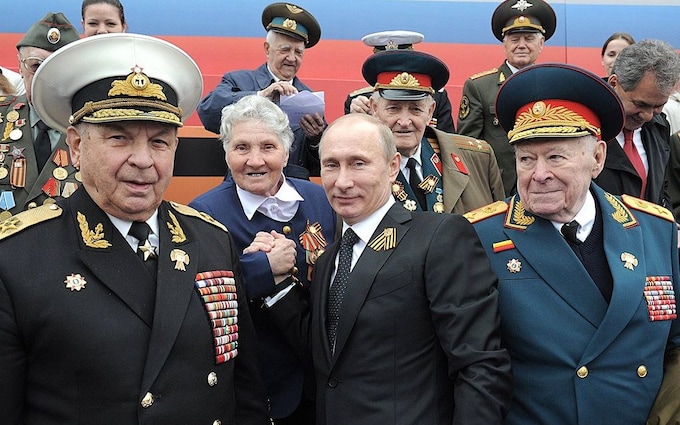
One of the most unforgettable moments in Oliver Stone’s 2017 documentary series The Putin Interviews was when the Hollywood filmmaker happens upon former Soviet Premier Mikhail Gorbachev while accompanying Vladimir Putin to the annual Victory Day celebrations in Moscow. Stone noticed Gorbachev in attendance at the ceremony in Red Square commemorating the 71st anniversary of the defeat of Nazi Germany, but Putin gave him the cold shoulder.
While he claimed to have overlooked the ex-Soviet president’s presence in the crowd, Putin’s snub was indicative of the treasonous legacy Gorbachev left behind, as surveys of the Russian people consistently rank him the least popular of all its former leaders.
Fewer than six months after the SMO began in Ukraine in 2022, Gorbachev died at the age of 91. His centrifugal reforms of the 1980s not only paved the way for his successor Boris Yeltsin’s hyper-capitalist privatization program, but dismantled the ethnic federalism that held the USSR and its myriad nationalities together.
Unfortunately, as the head of the capitalist state that emerged from the ashes of the Soviet Union, it is doubtful Putin will be able to fully resolve the national conflicts plaguing Russia’s near abroad. Only the return of a political struggle that unifies multinational peoples on a revolutionary basis can the forces of empire tearing them apart truly be overcome.

CovertAction Magazine is made possible by subscriptions, orders and donations from readers like you.
Blow the Whistle on U.S. Imperialism
Click the whistle and donate
When you donate to CovertAction Magazine, you are supporting investigative journalism. Your contributions go directly to supporting the development, production, editing, and dissemination of the Magazine.
CovertAction Magazine does not receive corporate or government sponsorship. Yet, we hold a steadfast commitment to providing compensation for writers, editorial and technical support. Your support helps facilitate this compensation as well as increase the caliber of this work.
Please make a donation by clicking on the donate logo above and enter the amount and your credit or debit card information.
CovertAction Institute, Inc. (CAI) is a 501(c)(3) non-profit organization and your gift is tax-deductible for federal income purposes. CAI’s tax-exempt ID number is 87-2461683.
We sincerely thank you for your support.
Disclaimer: The contents of this article are the sole responsibility of the author(s). CovertAction Institute, Inc. (CAI), including its Board of Directors (BD), Editorial Board (EB), Advisory Board (AB), staff, volunteers and its projects (including CovertAction Magazine) are not responsible for any inaccurate or incorrect statement in this article. This article also does not necessarily represent the views the BD, the EB, the AB, staff, volunteers, or any members of its projects.
Differing viewpoints: CAM publishes articles with differing viewpoints in an effort to nurture vibrant debate and thoughtful critical analysis. Feel free to comment on the articles in the comment section and/or send your letters to the Editors, which we will publish in the Letters column.
Copyrighted Material: This web site may contain copyrighted material the use of which has not always been specifically authorized by the copyright owner. As a not-for-profit charitable organization incorporated in the State of New York, we are making such material available in an effort to advance the understanding of humanity’s problems and hopefully to help find solutions for those problems. We believe this constitutes a ‘fair use’ of any such copyrighted material as provided for in section 107 of the US Copyright Law. You can read more about ‘fair use’ and US Copyright Law at the Legal Information Institute of Cornell Law School.
Republishing: CovertAction Magazine (CAM) grants permission to cross-post CAM articles on not-for-profit community internet sites as long as the source is acknowledged together with a hyperlink to the original CovertAction Magazine article. Also, kindly let us know at info@CovertActionMagazine.com. For publication of CAM articles in print or other forms including commercial internet sites, contact: info@CovertActionMagazine.com.
By using this site, you agree to these terms above.
About the Author

Max Parry is an independent journalist and geopolitical analyst based in Baltimore.
His writing has appeared widely in alternative media and he is a frequent political commentator featured in Sputnik News and Press TV. He also hosts the podcast “Captive Minds.”
Max can be reached at maxrparry@live.com.


